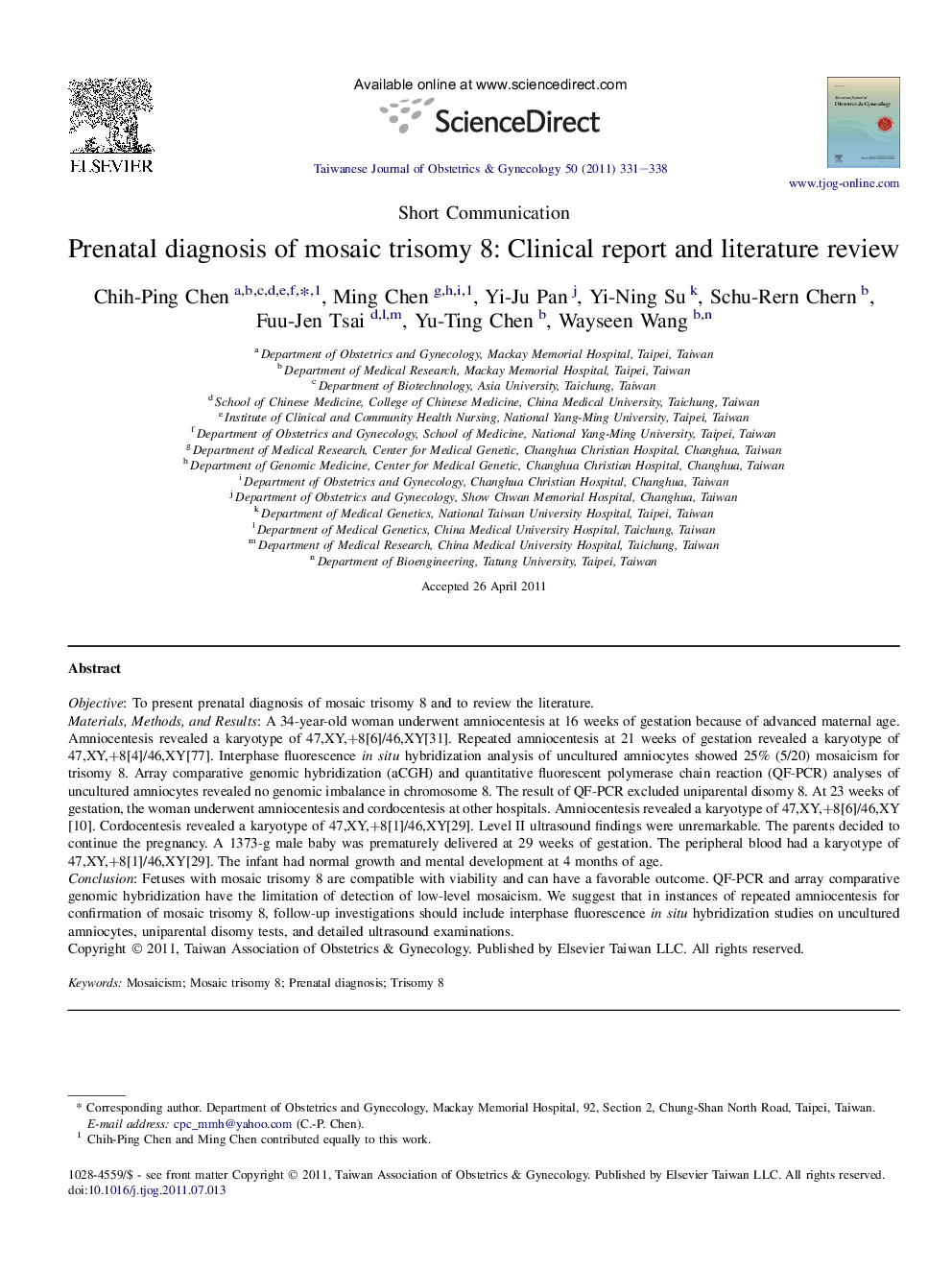| Article ID | Journal | Published Year | Pages | File Type |
|---|---|---|---|---|
| 3975762 | Taiwanese Journal of Obstetrics and Gynecology | 2011 | 8 Pages |
ObjectiveTo present prenatal diagnosis of mosaic trisomy 8 and to review the literature.Materials, Methods, and ResultsA 34-year-old woman underwent amniocentesis at 16 weeks of gestation because of advanced maternal age. Amniocentesis revealed a karyotype of 47,XY,+8[6]/46,XY[31]. Repeated amniocentesis at 21 weeks of gestation revealed a karyotype of 47,XY,+8[4]/46,XY[77]. Interphase fluorescence in situ hybridization analysis of uncultured amniocytes showed 25% (5/20) mosaicism for trisomy 8. Array comparative genomic hybridization (aCGH) and quantitative fluorescent polymerase chain reaction (QF-PCR) analyses of uncultured amniocytes revealed no genomic imbalance in chromosome 8. The result of QF-PCR excluded uniparental disomy 8. At 23 weeks of gestation, the woman underwent amniocentesis and cordocentesis at other hospitals. Amniocentesis revealed a karyotype of 47,XY,+8[6]/46,XY[10]. Cordocentesis revealed a karyotype of 47,XY,+8[1]/46,XY[29]. Level II ultrasound findings were unremarkable. The parents decided to continue the pregnancy. A 1373-g male baby was prematurely delivered at 29 weeks of gestation. The peripheral blood had a karyotype of 47,XY,+8[1]/46,XY[29]. The infant had normal growth and mental development at 4 months of age.ConclusionFetuses with mosaic trisomy 8 are compatible with viability and can have a favorable outcome. QF-PCR and array comparative genomic hybridization have the limitation of detection of low-level mosaicism. We suggest that in instances of repeated amniocentesis for confirmation of mosaic trisomy 8, follow-up investigations should include interphase fluorescence in situ hybridization studies on uncultured amniocytes, uniparental disomy tests, and detailed ultrasound examinations.
